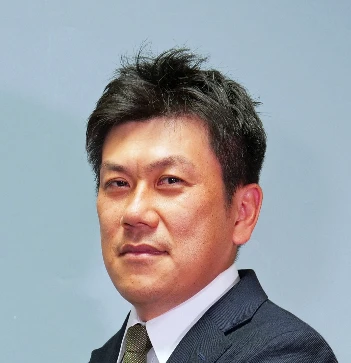1137 - Impact of Baseline Liver Function on Survival Outcomes following Initial SBRT vs. SBRT Re-Irradiation for Hepatocellular Carcinoma: An Albumin-Bilirubin Grade Analysis
Presenter(s)

D. Nakamura1,2, Y. Motoyoshi3,4, S. Nagaoka3,4, A. Komori3,4, and R. Toya1; 1Department of Radiological Sciences, Nagasaki University Graduate School of Biomedical Sciences, Nagasaki, Japan, 2Department of Radiology, NHO Nagasaki Medical Center, Omura, Nagasaki, Japan, 3Clinical Research Center, NHO Nagasaki Medical Center, Omura, Nagasaki, Japan, 4Department of Hepatology, Nagasaki University Graduate School of Biomedical Sciences, Nagasaki, Japan
Purpose/Objective(s): Stereotactic body radiation therapy (SBRT) is an effective local treatment for hepatocellular carcinoma (HCC), showing excellent local control with minimal toxicity. While SBRT re-irradiation for intrahepatic recurrence appears to have comparable effectiveness to initial SBRT, the impact of baseline liver function on survival outcomes remains unclear. This study examines how baseline liver function, measured by Albumin-Bilirubin (ALBI) grade which provides more objective assessment than Child-Pugh score, affects survival outcomes in HCC patients receiving initial SBRT versus SBRT re-irradiation.
Materials/Methods: A retrospective analysis was conducted on 177 HCC lesions at our institution, consisting of 132 lesions from consecutive patients who received initial SBRT (2013-2020) and 45 SBRT re-irradiation lesions for intrahepatic recurrence (2013-2023) in the same cohort. Cases with under 6 months follow-up or palliative SBRT were excluded, except for curative-intent cases where death occurred within 6 months. Lesions were individually analyzed and stratified by baseline ALBI grade. Overall survival was compared between initial SBRT and SBRT re-irradiation using Kaplan-Meier curves and log-rank tests. Using Cox proportional hazards models, we calculated HRs in univariate analysis for SBRT re-irradiation, age, sex, time from onset, recurrence within 1 year after SBRT, number of prior local treatments, and liver volume. For ALBI grade 2, modified ALBI grade was included as a factor. Factors with p<0.05 were entered into multivariate analysis to calculate adjusted HRs.
Results: After exclusion, 143 lesions across 106 patients were analyzed (106 initial SBRT, 37 SBRT re-irradiation). Treatment was primarily prescribed as 45 Gy in 5 fractions to the isocenter or 40 Gy in 5 fractions to D95 of PTV. With a median follow-up of 3.6 years, lesions were stratified by baseline ALBI grade: 68 grade 1, 72 grade 2 (29 modified grade 2a, 43 modified grade 2b), and 3 grade 3. In ALBI grade 1, median survival time was not reached in either initial or SBRT re-irradiation groups, with no significant difference between groups (p=0.16). In ALBI grade 2, median survival time was significantly shorter with SBRT re-irradiation compared to initial SBRT (2.8 years [95% CI: 1.5-3.0] vs 4.1 years [95% CI: 3.2-5.4], p<0.01). In ALBI grade 1, no significant prognostic factors emerged. In ALBI grade 2, multivariate analysis revealed three adverse prognostic factors: SBRT re-irradiation (HR 3.47, 95% CI 1.72-6.99, p<0.01), recurrence within one year (HR 2.69, 95% CI 1.39-5.20, p<0.01), and modified ALBI grade 2b (HR 2.07, 95% CI 1.10-3.90, p=0.02).
Conclusion: SBRT re-irradiation for HCC shows no significant difference in survival outcomes for ALBI grade 1 patients, whereas it correlates with poorer outcomes for ALBI grade 2 patients. These findings suggest careful assessment of risks and benefits of SBRT re-irradiation in ALBI grade 2 patients.
